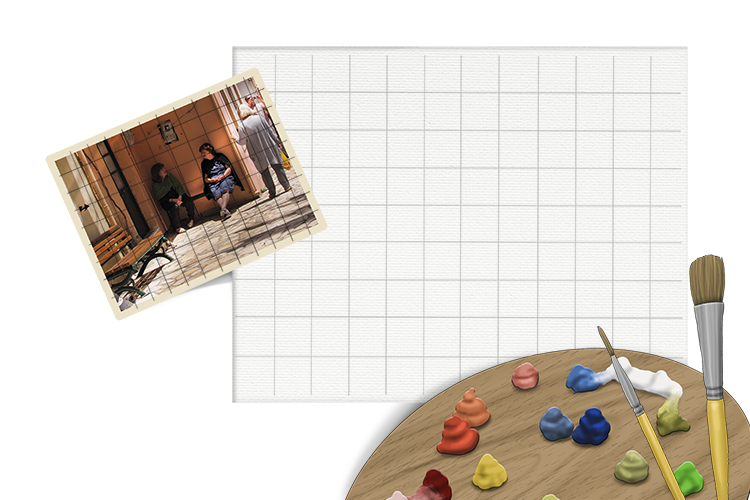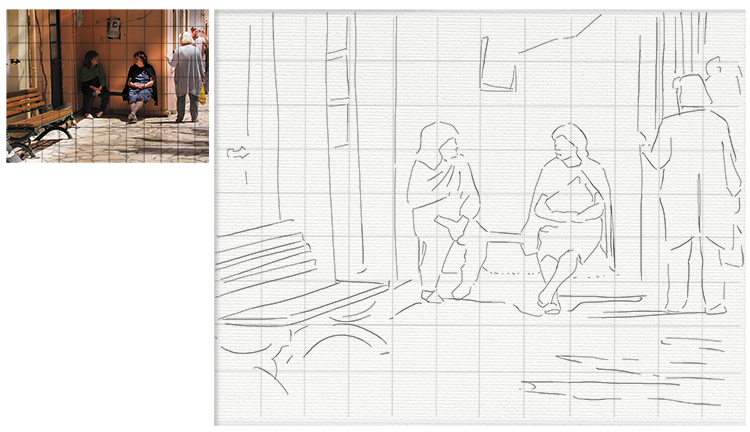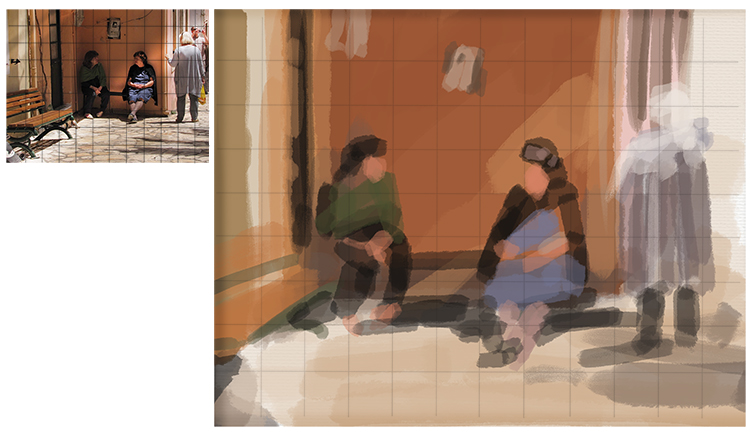Édouard Manet Art Project
As Édouard Manet was one of the main artists of the impressionist movement in France, this project will focus on the ideology behind impressionism and the aim of Manet's paintings.
Rather than trying to paint a photo-realistic, carbon copy of the scene in front of him, Manet, along with the other impressionists, wanted to simply paint an impression of it. Fine details and neat lines were no longer considered important, expressive brushstrokes and portraying the energy of a scene was key.
For this exercise, we are going to work from a photograph and use the Mammoth Memory grid method to copy it onto our work. We can then apply paint in the characteristic style Manet used.
When selecting a subject, think about Manet's paintings. There were almost always people included, whether it be a crowd or just the main sitters, and a somewhat busy background. Aim to find a photograph, or sit looking at a view with these traits. We have found a photograph of some people chatting in the street, reflecting the sense of social interaction present in Manet's work.
Get your photograph ready and set up your paints and canvas/paper. Grid up your photograph and the canvas using Mammoth Memory Art's grid technique.

Once you have added the grid, you can use it to draw in the key features to help you decide which areas to paint in which colours. This doesn't have to be too detailed but the grid will help with composition, ensuring features are in the correct place.

Now we can start painting, but remember the key point with impressionism – it's an impression of the scene, not a detailed painting to look like a photograph.
The best place to start when painting in this style is with the blocking-in of the colours, filling the canvas with an underpainting to show the composition you want. This doesn't have to be detailed, it's blocky and expressive. If you are less confident, thin the paint down a little in order to lightly block the sections in.

Once you have your underpainting blocked in, you can begin applying the elements characteristic of Manet. Start adding the detail, in bold brushstrokes of all shapes and sizes. Do not conform to lines and do not worry about the final outcome – it is an 'impression' after all. Much of the detail in Manet's paintings was created by almost dabbing small blobs and blotches of paint rather than going in with a fine brush and adding intricate strokes.

Édouard Manet




